 |
Janell Ng from New Zealand is getting her hair done in a hair salon in Gangnam-gu, Seoul. (The Korea Herald/ Choi Jeong-yoon) |
Twenty-eight-year-old Janell Ng from New Zealand, who is visiting Korea with her family, knows her priority. Their first stop is a hair salon in Gangnam-gu, Seoul, where each family member hopes to experience a trendy Korean-style makeover.
"It's our first time visiting Korea. We are here for a week, and the first thing on the itinerary is to get our hair done at a Korean hair salon," she said while having her hair permed at Suin Style Hair and Spa in Samseongdong, southern Seoul.
The Ng family is not alone. The salon says it sees over 180 foreign national customers each month.
"After COVID-19, there has been a dramatic hike in the number of foreign customers in the last few months. With growing demand, we have all the menus in English and the hair designers learn about different types of hair as the races of customers are becoming more diverse," said Steven, a hair designer who has been in the beauty industry for over a decade.
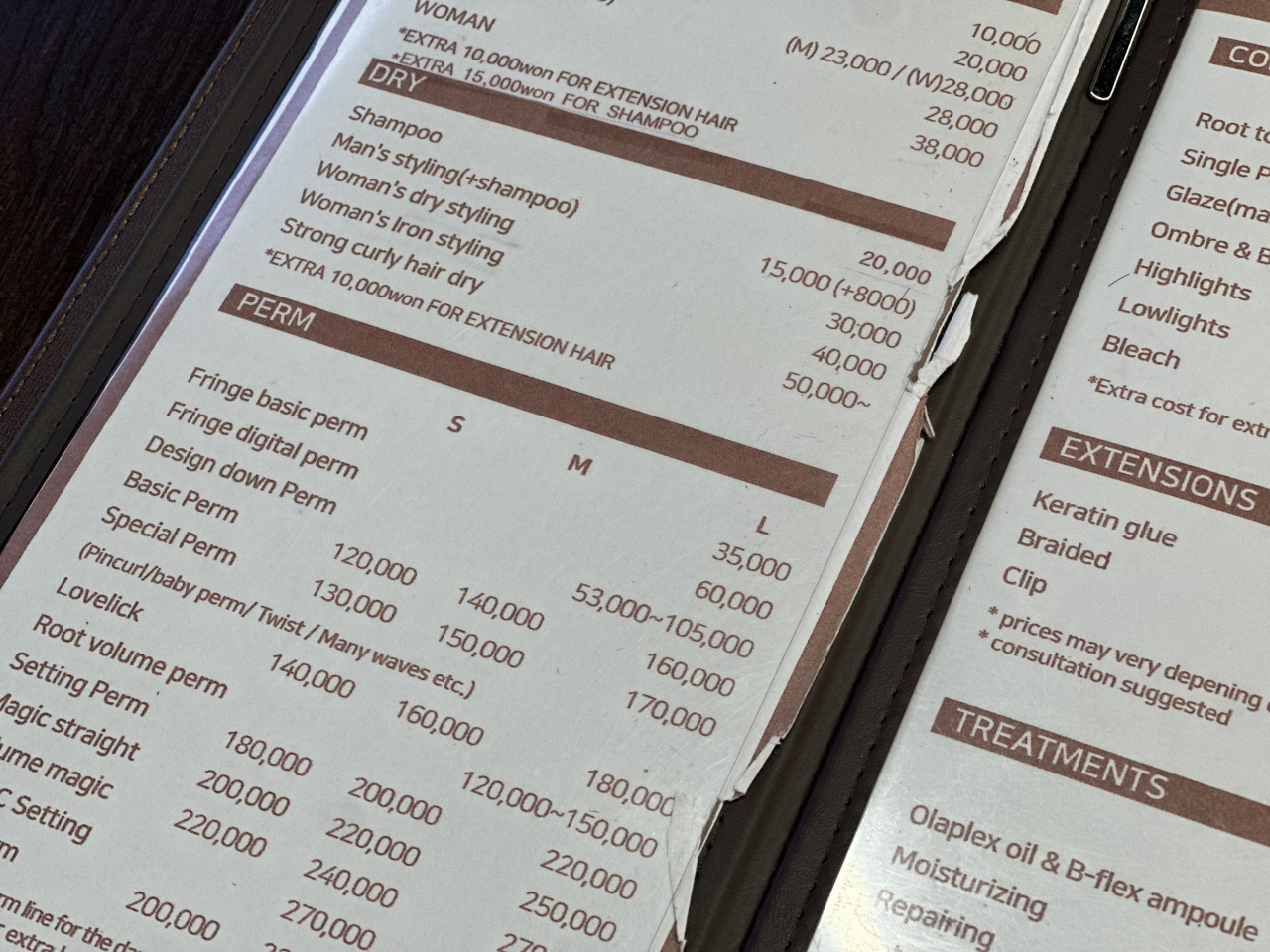 |
The list of prices for cuts, perms, dying, extensions and other hair treatments is written in English to accommodate English-speaking customers. (The Korea Herald/ Choi Jeong-yoon) |
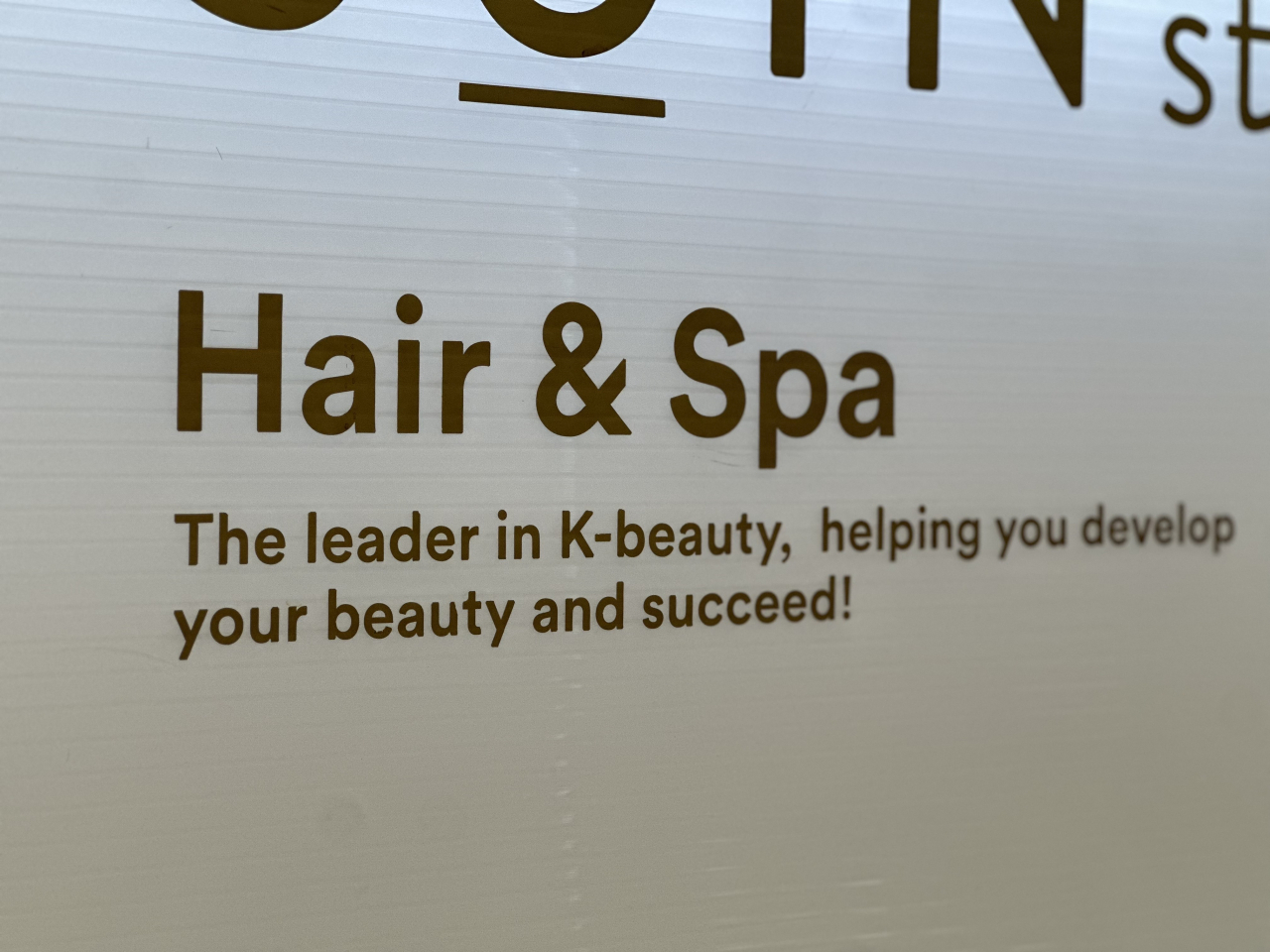 |
Signs of Suin Style Hair&Spa written in English. (The Korea Herald/ Choi Jeong-yoon) |
"In the past, there were sometimes customers from China and Japan. That has expanded to countries like Singapore, Hong Kong, European countries such as the United Kingdom, France and Germany, even Saudi Arabia and Tunisia."
Steven of Suin Style Hair attributes this to the increased popularity of Korean culture, such as K-pop and Korean films and series.
"In the past, the Korean hair techniques or industry was not well known around the world. Japan was strong in that part. But now, thanks to diverse platforms and K-culture, the beauty culture has garnered attention, which is very inspiring to me."
Life of Koreans, a culture
Joanna from Poland, who was bulk buying diverse beauty products at a shop in Gwanghwamun, like Janell, was drawn to the trend of experiencing Korea through beauty treatments. Joanna emphasized how immersive it felt to take part in a local beauty routine she saw as integral to Korean daily life.
Besides Korea's mouthwatering cuisines and rich culture and history, simply experiencing the everyday lives of Koreans is garnering attention with a new concept Koreans call "Dailycation," a blend of "daily" and "vacation." The trend is fast becoming one of the most compelling reasons foreign tourists visit Korea.
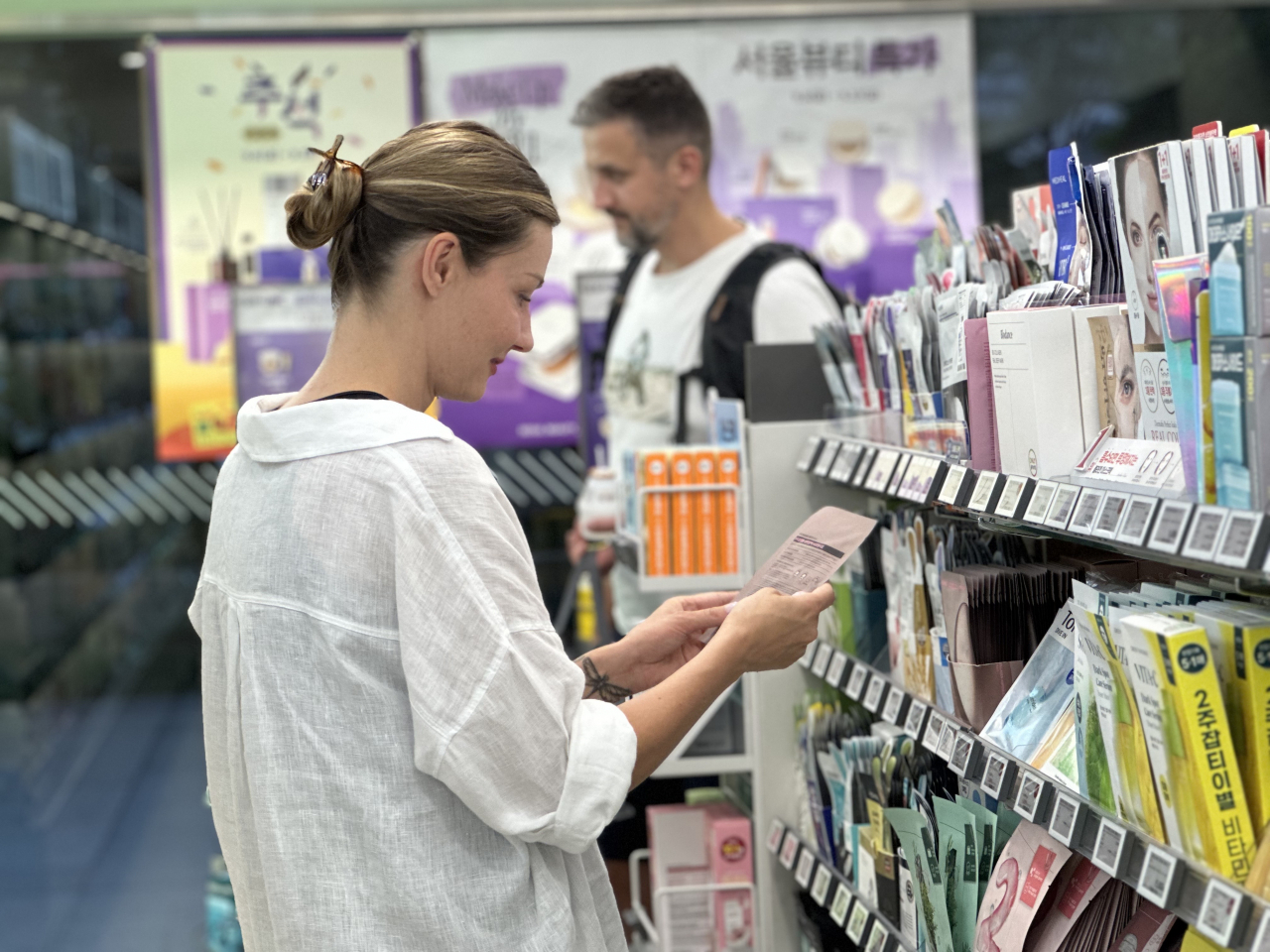 |
Joanna from Poland looks at face masks at a beauty product store in Gwangwhamun, Seoul. (The Korea Herald/ Choi Jeong-yoon) |
While beauty experiences are leading the charge, Dailycation encompasses much more. Many tourists are dining like locals, experiencing food delivery services or visiting selfie studios to capture memories in a uniquely Korean manner.
According to Creatrip, the most popular food categories for foreign tourists this year were chicken (22 percent), cafes and desserts (17 percent), and soybean crab dishes (16 percent). A unique twist in these dining habits is that foreign visitors often choose delivery over dining in, mimicking how many Koreans enjoy their meals at home.
Photo studios have also become increasingly popular, with more tourists opting for high-quality, retouched photos that reflect the polished aesthetic of Korean culture. This shift from outdoor snapshots in traditional hanbok to indoor studio sessions highlights how foreign visitors are drawn to enjoying photo sessions the way young Koreans do.
Dramas come to life
"It's like I'm living in the K-drama," Paula from Spain told The Korea Herald.
"I watch many Korean drama series and the streets and cafes that I visited for the last few days are just like the ones in the drama. It feels like the dramas came to life, or me in the drama," Paula chuckled.
Ranging from enjoying "chimaek," a term combining the Korean words for fried chicken and beer, at Han River, trying out snacks and beer at the tables outside a convenience store, to taking selfies at a photo booth, tourists partake in the aspects of Korean life they have seen Koreans enjoying in media.
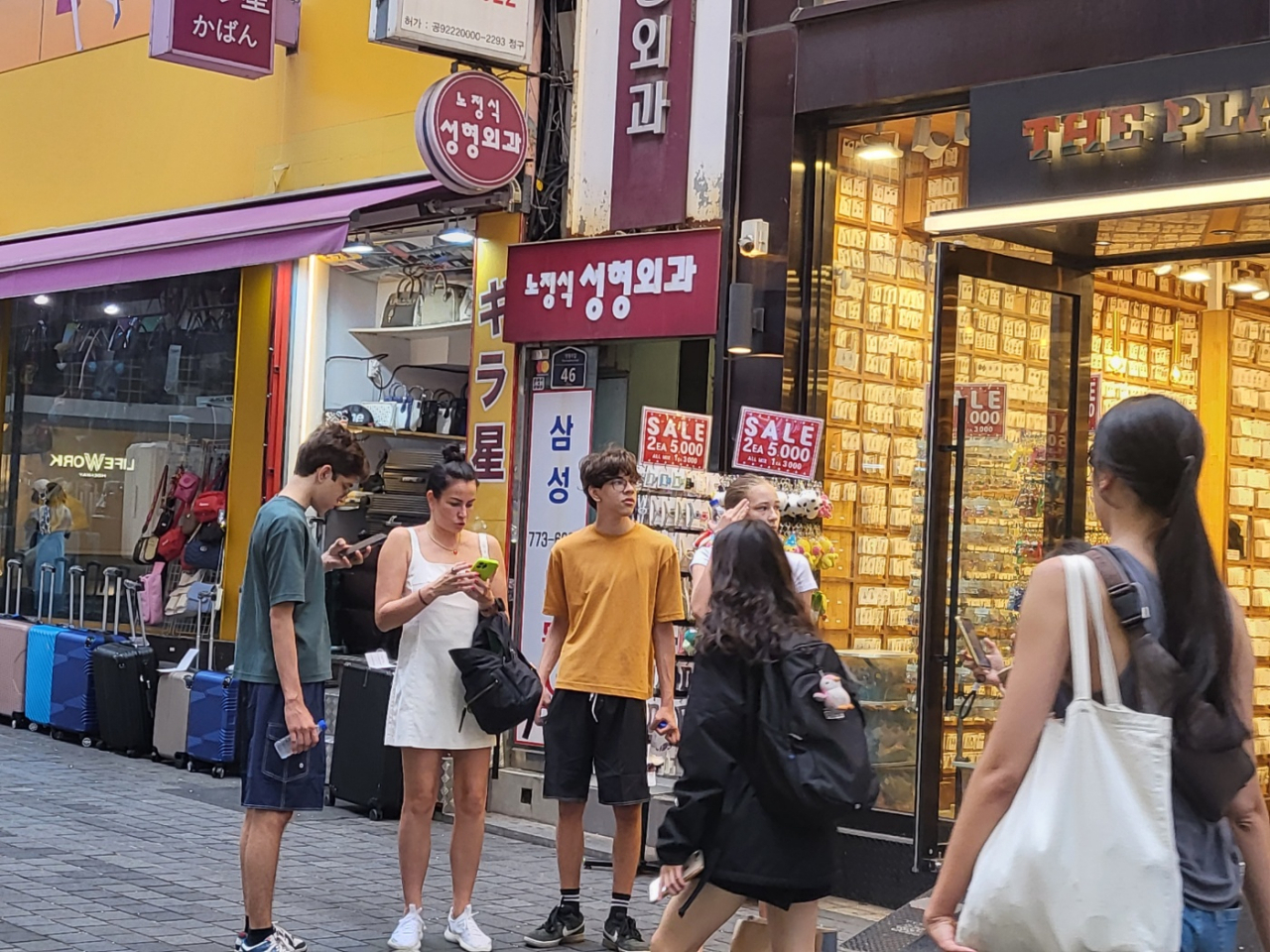 |
Tourists walk in Myeongdong, Jung-gu, Seoul. (The Korea Herald/ Choi Jeong-yoon) |
Beauty shops have become one of the most popular aspects of this trend, with salons and beauty clinics catering to foreign tourists on a massive scale.
According to recent research by tour platform Creatrip, which helps tourists create Korean-style trips, among the platform's 186 percent increased overall transaction value, the largest take came from hair salons, which ranked first on the list.
Beauty salons, specifically hair salons, have become the hottest destinations within the Dailycation experience. In fact, Creatrip revealed that the hair salon category grew by 382 percent year-on-year in terms of transactions on the platform, and is now the most popular service among foreign tourists. Personal color consultations, which have become a staple in Korean beauty culture, also contributed significantly to this rise, with tourists eager to embrace these personalized services.
Many visitors use these beauty services as a gateway to understanding Korean culture and style. Whether it’s a dramatic K-pop-inspired makeover or an everyday local hairstyle, these experiences offer a deeper connection with the culture than traditional sightseeing might.
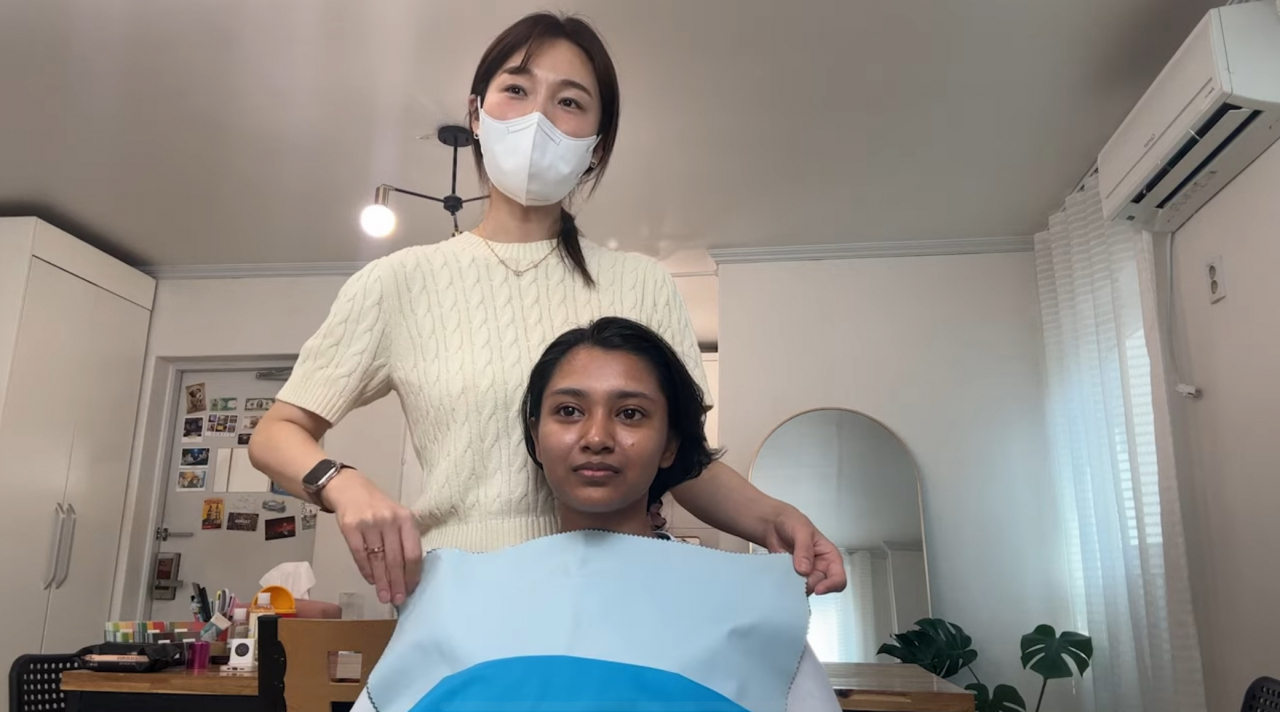 |
Screenshot from YouTuber Rhuthshana's video where she says she flew to Korea just to get a professional personal color analysis |
A Global Phenomenon
The Dailycation trend isn’t just limited to a handful of nationalities. Tourists from all over the world are embracing it. In the first half of 2024, the highest number of transactions on Creatrip came from Taiwan, the United States, Hong Kong and Japan. In particular, American tourists have shown remarkable interest in hair salons and beauty treatments, with transactions growing by 522 percent year-on-year.
This trend is reshaping how people experience travel in Korea. Rather than ticking off tourist landmarks, visitors are immersing themselves in the Korean way of life, discovering the nuances of beauty rituals, food habits and daily routines that locals cherish.







![[Today’s K-pop] Blackpink’s Jennie, Lisa invited to Coachella as solo acts](http://res.heraldm.com/phpwas/restmb_idxmake.php?idx=644&simg=/content/image/2024/11/21/20241121050099_0.jpg)